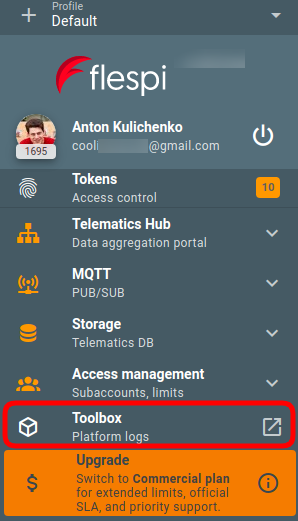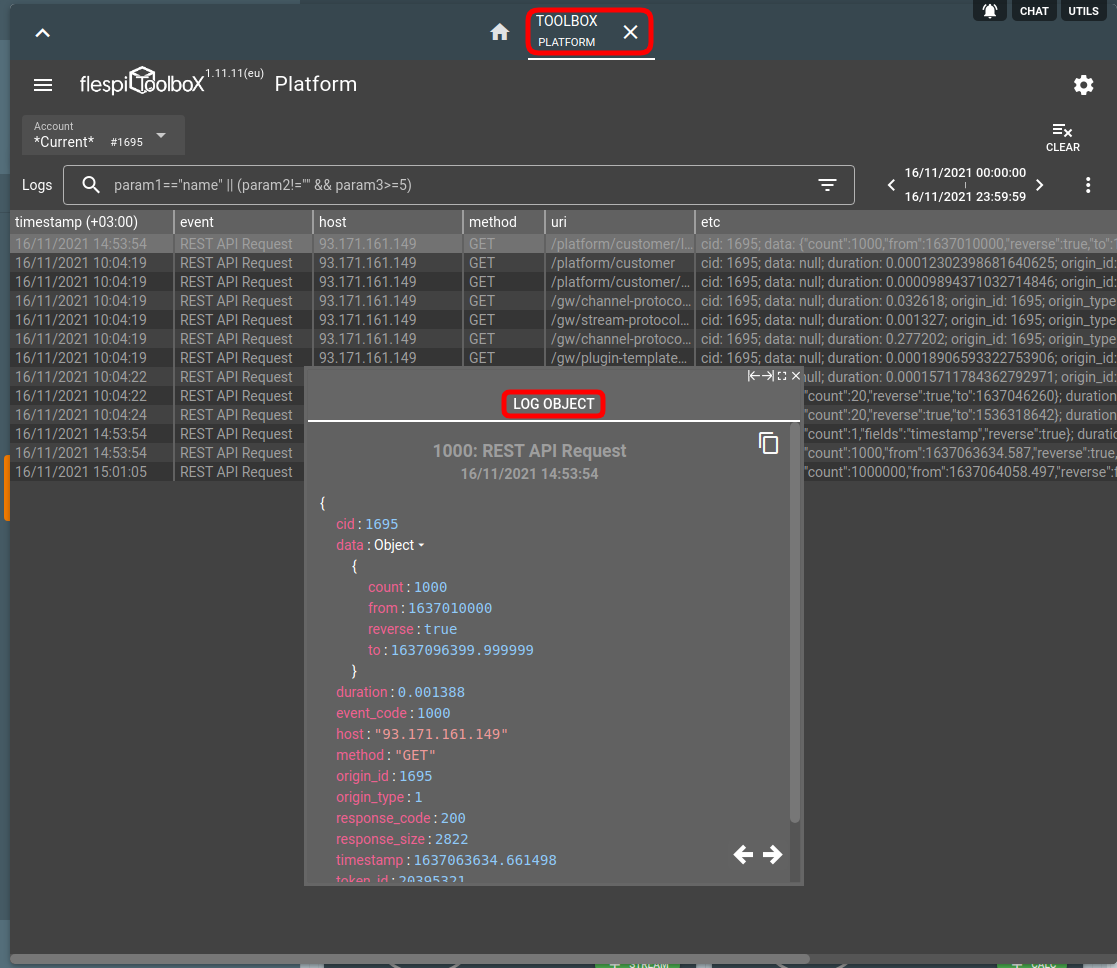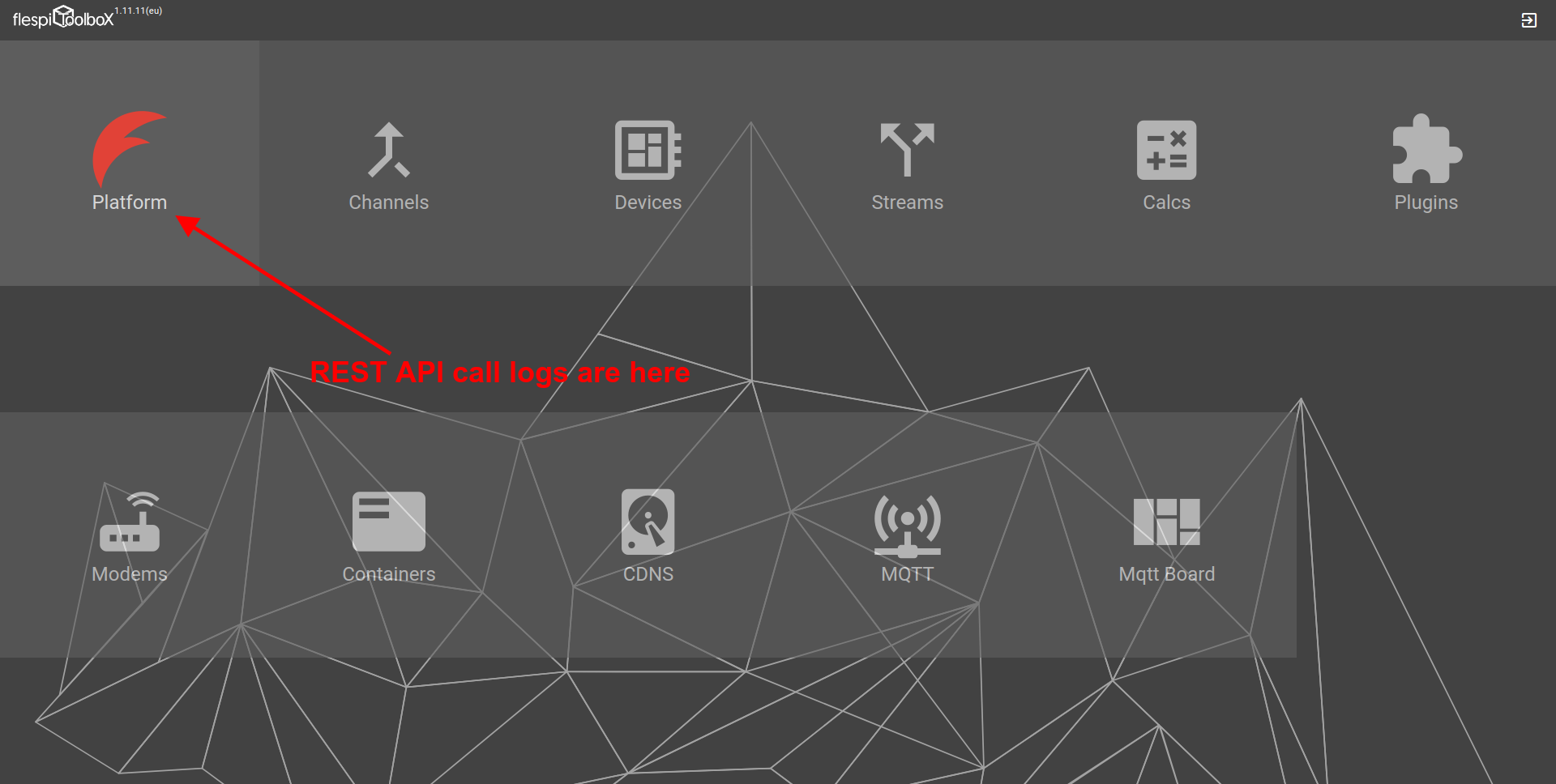We develop a platform for programmers, and logs for programmers mean the same as annals for historians — they help reconstruct the chronology of events, their participants, and outcomes. Good logs add value by saving developers’ time thus making them more productive and enabling them to devote their talent to creative effort.
Since flespi requires decent technical literacy to feel comfortable and to recognize its true power, we keep enhancing our debugging toolset for you to be able to address any problem in the shortest time possible. The flagship debugging tool in our ecosystem is Toolbox that shows logs, messages, raw traffic, intervals, tracks, and a lot more. What was missing in such an API-centric platform like flespi were the API call logs.
Now we have them! All relevant information about each API request performed by the flespi platform is now carefully and verbosely logged.
You can easily access the REST API call logs from the flespi panel — the Toolbox / Platform logs item appeared at the bottom of the left-side menu:
The platform logs include the following information about each request: the request source, its parameters, content, response code, response size, and time it took to perform the request.
The complete list of response codes is available here. You can use these response codes in the logic of your solution to design different lines of behavior depending on the success/failure of specific requests.
If you run Toolbox as a separate tool, you can find the REST API call logs in the Platform section:
The platform logs are stored for 365 days or until they reach 3 GB in size.
***
Every time you face unexpected behavior somewhere in the guts of your solution, you appreciate the usefulness of logs. We want troubleshooting to be quick and effective so that the final emotion resembled gratitude rather than disgust. Having all REST API requests logged means having all actions on the flespi platform documented, which allows you to rest assured that whatever happens, the reasons and the culprits will be identified.
Stay tuned for our new features — there’s a lot more coming soon.


